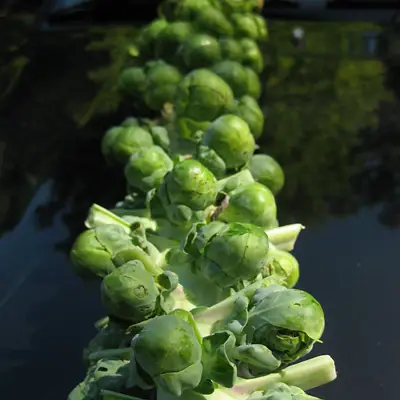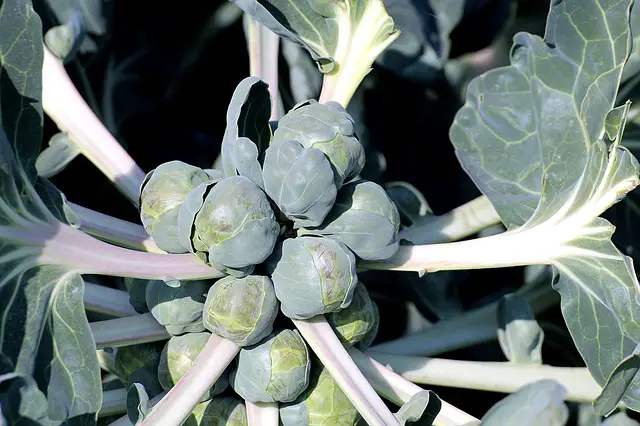We use affiliate links to run our site. When you buy through links on our site, we may earn an affiliate commission, without any added cost to you. Learn more
Brussels sprouts are named after the city of Brussels, Belgium because of their origin. They are a part of the cabbage family just like broccoli, cauliflower, and cabbage, etc.
Brussels sprouts have a very long growing season. People often get confused about the maturity of their sprouts, and the ideal harvesting time. So in this post, I will discuss when you should harvest Brussels sprouts and how to do it exactly.
So if you also confused about when to harvest Brussels sprouts, read on.
When to Harvest Brussels Sprouts:
Brussels sprouts are cool weather crops so they can easily survive frost, actually, light frost can improve the flavor of your Brussels sprouts.
And if you are in warmer climates you hardly need to give any extra protective measures to survive the winter.
The best time to harvest Brussels sprout are the falls.
The Brussels sprouts take a long time to mature, for some varieties it is even over 100 days. So have the patience for harvesting.
Start picking the sprouts once the buds start to turn yellow and begin to open. The buds should be about 1 to 1.5 inches in diameter and bright green and firm.
Don’t harvest all the sprouts at once, the sprouts on a stalk don’t mature all at once. Harvest them as they mature.
Once you pick the sprouts, new ones will continue forming. Continue the process of harvesting the sprouts till there are no sprouts left on the plant.
Once the weather starts getting warmer the buds will start bolting and the process will eventually stop.
How to Harvest Brussels Sprouts?

Harvest the sprouts by twisting them off the stalk.
For a single plant, you can get as high as 50 Brussels sprouts. Once you harvested all the sprouts you can still get seeds if you continue growing the plant.
How to Get Tastiest Brussels Sprouts:
The key to the tastiest Brussels sprouts is the right planting time. They are a cool-weather crop with a long growing season.
If you are growing Brussels sprouts from seeds you will have to wait for 100 days. You can shorten the period (80-90 days) a bit if you choose transplants in place of seeds.
Plant your sprouts in such a way so that it matures when the weather is cool or frosty. If your sprouts mature during hot weather they will be bitter in taste.
The ideal Temperature:
The ideal temperature for a Brussels sprout is 60 F to 65 F, if the temperature remains above 70 F for quite some time your Brussels sprouts will bolt.
Pruning:
Pruning is crucial for getting a quality yield. Start removing the lower leaves of the plant once the sprouts start appearing. This will focus the plant to put most of the resources into the sprouts.
While harvesting the sprouts remove any yellow leaves that are nearby. It will help the plant receive more sunlight and airflow.
Also remove the growing tips of the plant. This will result in bigger sprouts that also matures faster.
How to Store Brussels Sprouts:
Brussels sprouts taste best when are fresh. You can also store them in plastic bags in the refrigerator.
Some Quick Tips for Growing Brussels Sprouts:
- Always plant brussels sprouts in early spring and early fall so that it receives cool temperature.
- Choose a location where the plant gets at least 6 hours of sunlight daily.
- Space the plants 2 ft apart.
- Use well-drained soil with organic nutrients. Mix compost or manure with the soil before planting Brussels sprouts.
- Water your plants regularly. Brussels sprouts need 1 to 1.5 inches of water every week.
- Feed your plants regularly with a slow-releasing organic fertilizer.
- Apply a 3-inch layer of mulch. This will preserve the soil moisture and also prevent weeds.
Amazon and the Amazon logo are trademarks of Amazon.com, Inc, or its affiliates.

Hi there! My name is Prasenjit and I’m an avid gardener and someone who has grown a passion for growing plants. From my hands-on experience, I have learned what works and what doesn’t. Here I share everything I have learned.
